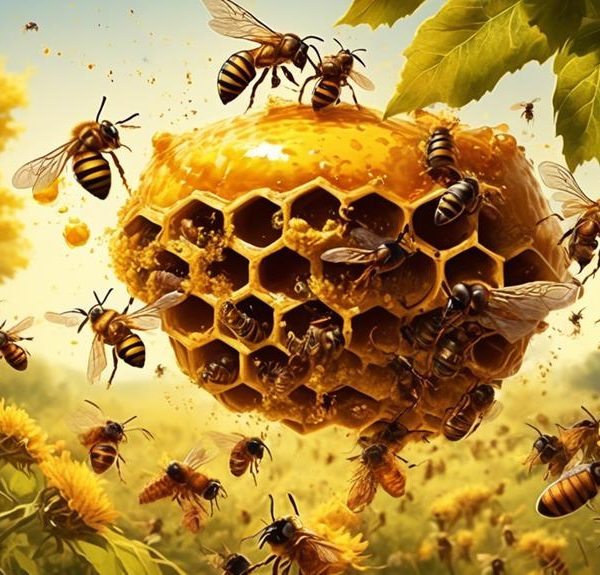Find out if the common housefly shares our love for honey's sweetness or if there's something more luring them in.
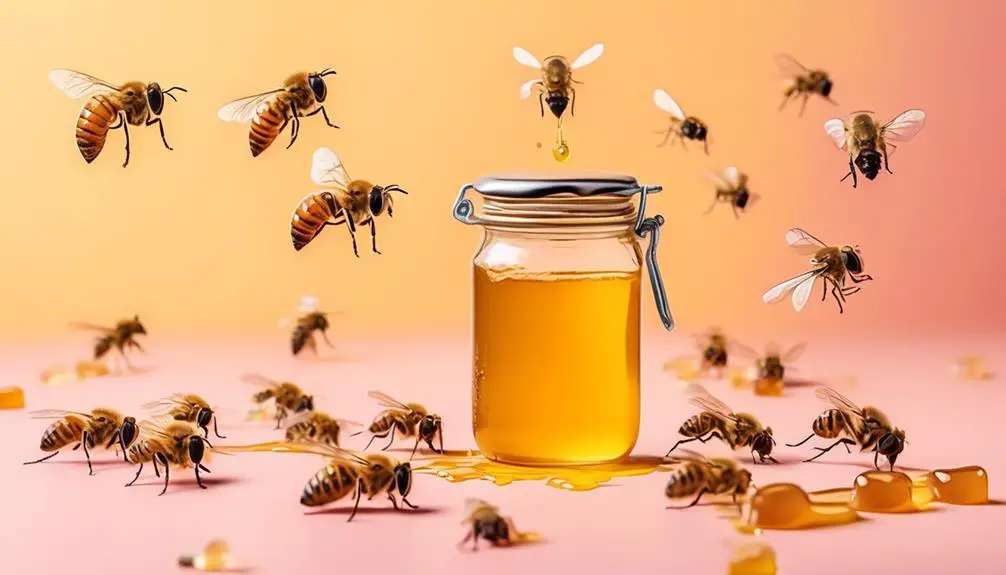
Are Flies Attracted to Honey?
Just as a rose represents love in the world of symbolism, so does honey symbolize sweetness in the realm of gastronomy.
But does this sweetness allure the common housefly as it does many of us?
You might have noticed these pesky insects hovering around your sweet treats, causing you to question if they are specifically attracted to honey.
As you navigate through this intriguing discussion, you'll uncover the complex mechanisms behind a fly's attraction and answer the probing question: Is it the honey they're after, or is it something more?
Key Takeaways
- Flies have evolved advanced olfactory systems that specifically attract them to sugars and compounds in honey.
- Honey serves as a vital energy source for flies due to its high sugar content, providing quick energy and supporting their functional needs.
- Flies are opportunistic feeders attracted to various food substances, with a preference for sugary items like fruits and honey for fueling high-energy activities.
- Using honey as bait in eco-friendly fly traps can effectively reduce fly populations in fly-prone areas, offering a simple and inexpensive pest control approach.
Understanding Fly Attraction Mechanisms
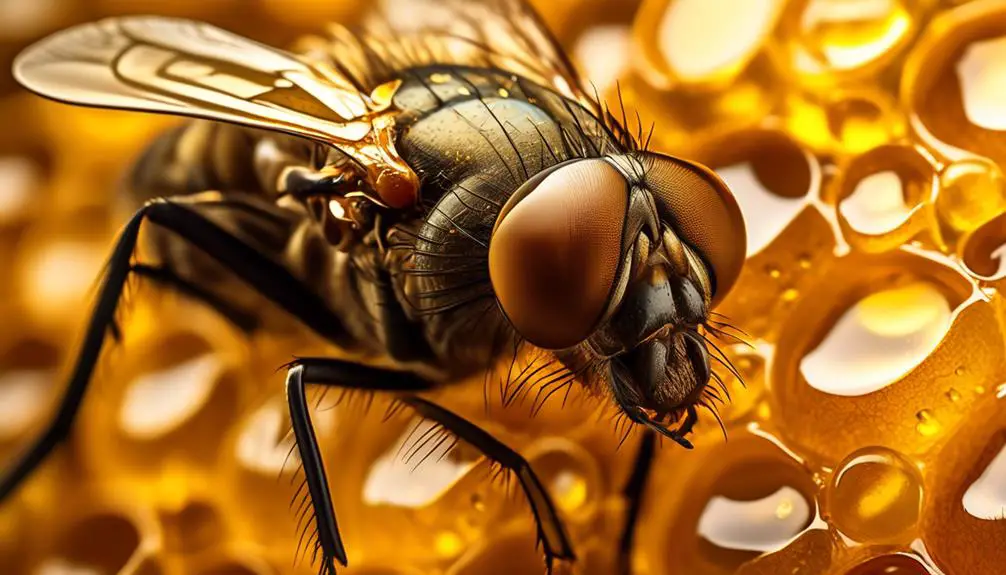
How do flies discern the sweet allure of honey from other scents in their environment? This question is rooted in understanding the intricacies of insect olfaction, specifically in Diptera, the order to which flies belong. You see, flies possess an advanced olfactory system, equipped with sensory organs called antennae. These antennae are covered in tiny hair-like structures known as sensilla which contain olfactory receptor neurons (ORNs).
When a fly encounters an odor, for instance, honey, the molecules interact with the ORNs. This interaction generates an electrical signal that's transmitted to the fly's brain. The olfactory information received is then processed and recognized, leading to an appropriate behavioral response, such as moving towards the source of the scent.
However, flies aren't just attracted to any sweet scent. They're specifically drawn to the unique combination of sugars and other compounds in honey. This attraction isn't accidental. It's an evolutionary adaptation that's developed over millions of years, allowing flies to find and feed on nutritious nectar sources in their environment. Understanding this mechanism can help in developing better pest control strategies. After all, the best way to catch flies is with honey, not vinegar.
Flies and Their Food Preferences
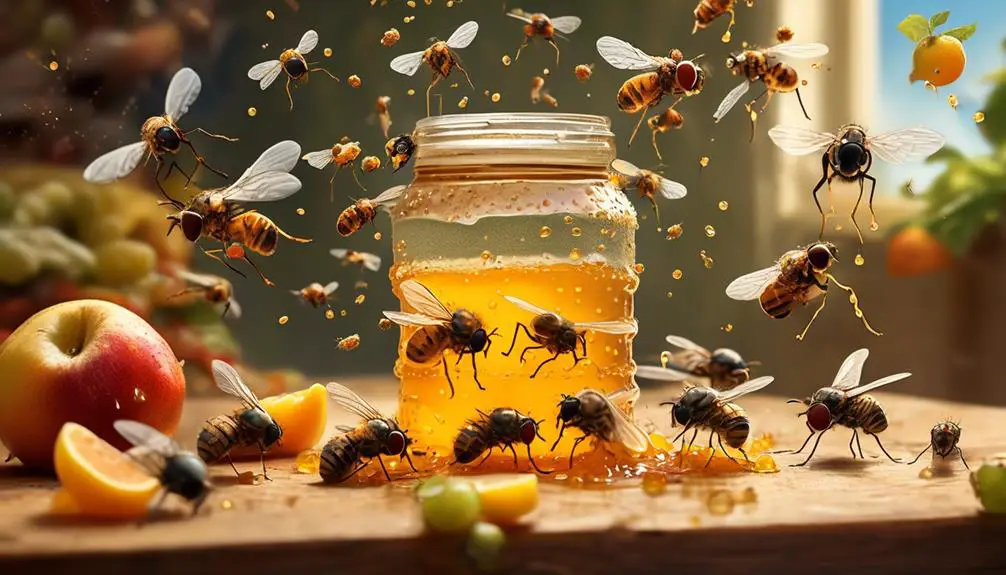
Building on our understanding of fly attraction mechanisms, let's now examine their specific food preferences, which extend beyond the sweet allure of honey. Flies, particularly the common housefly, are known as generalist feeders. This means they're attracted to a wide variety of food substances, not just sweets.
You might be surprised to learn that flies are primarily attracted to decaying organic material, which they utilize both as a food source and a breeding ground. This includes rotting fruits, vegetables, meats, and even fecal matter. The pungent odor emitted by these decaying substances is irresistible to them, due to their highly sensitive olfactory receptors.
Flies also have a penchant for sugary substances. They're attracted to the high sugar content in fruits, nectars, and yes, honey. They can detect these sweet substances from a distance due to their keen sense of smell.
However, their attraction to sugar isn't purely for dietary reasons. Flies also require sugar to fuel their high-energy activities such as flying and reproducing. Hence, while honey is indeed attractive to flies, it's not the only thing on their menu. Flies are truly opportunistic feeders, seeking out whatever food source is readily available.
Exploring the Sweetness Factor
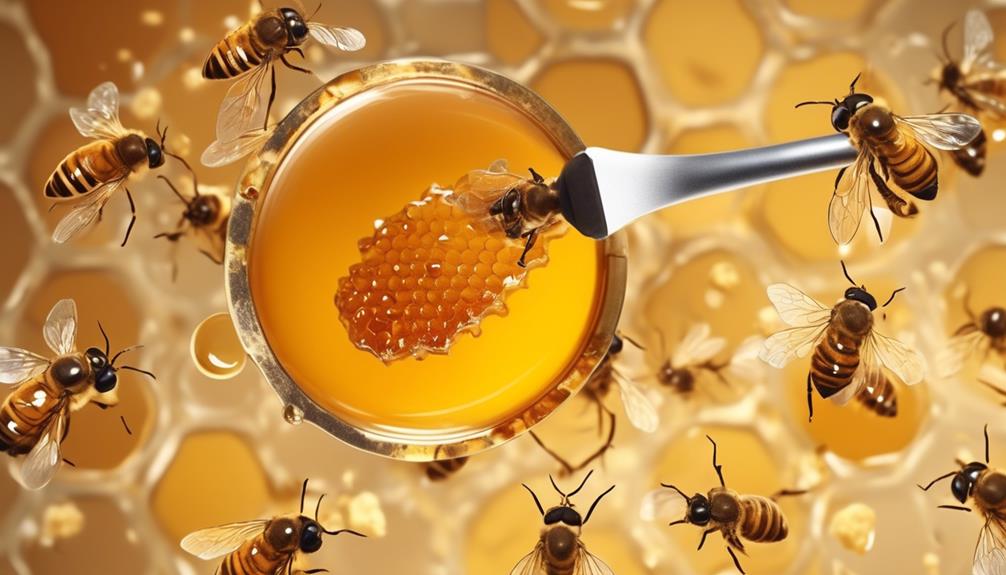
Ever wondered why the sweetness of substances like honey is such a potent lure for flies? It's all down to the chemistry. When the complex sugars in honey are broken down, they produce simple sugars like glucose and fructose, which are high in energy. These simple sugars are easily detected and highly desirable to flies, who need energy to fuel their constant flight and reproduction.
Flies have evolved to be able to taste sweetness with their feet. This adaptation allows them to quickly locate sources of sugar in their environment, and honey, with its high sugar content, is a prime target. Their antennae also play a key role in this process, as they're equipped with sensory receptors that can detect the presence of sugars.
You might've noticed that flies are drawn to your sugary drinks or fruit as well. The same principle applies – these items also contain simple sugars that are easy for flies to digest and turn into energy. So, the next time you see a fly buzzing around your honey jar, remember, it's not just the sweetness they're after, it's the energy-packed sugar.
The Verdict: Honey and Flies
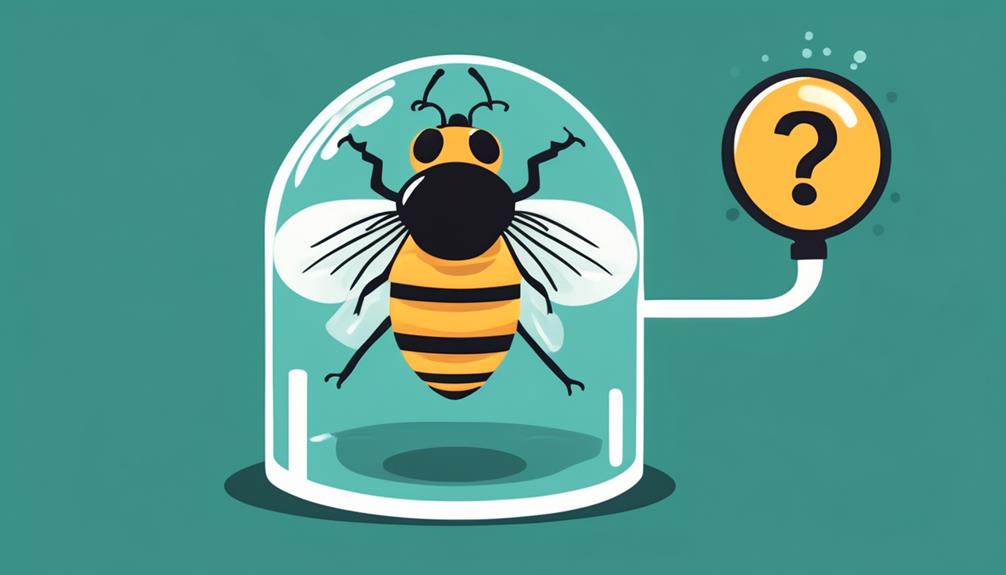
In understanding this attraction, it's clear that honey is more than a sweet treat for flies; it's a vital energy source they're instinctively drawn to. This instinct is rooted in their survival need for a high-energy, easily digestible food source. Honey, being rich in simple sugars, provides just that.
To illustrate, let's examine the key components attracting flies to honey:
Component | Role in Attraction | Why It's Essential for Flies |
|---|---|---|
Fructose | Primary sugar in honey | Provides quick energy |
Glucose | Secondary sugar in honey | Fuels cells directly |
Amino Acids | Minor components in honey | Supports protein synthesis |
This table showcases why honey is such a powerful attractant for flies. The sugars, fructose and glucose, are pivotal for their energy needs, while amino acids support their vital functions.
Implications for Pest Control

Given this understanding of flies' attraction to honey, you can leverage it for effective pest control strategies. You might be wondering just how to do this. By using honey as bait, you can create eco-friendly traps to control the fly population in your home or garden. The best part is, it's inexpensive and easy to implement.
Start by filling a container with honey, then place it in an area where you've noticed a high concentration of flies. The sweet aroma of the honey acts as an irresistible lure, drawing the flies into your trap. Once inside, they're unable to escape, effectively reducing the fly population in your immediate surroundings.
Consider, however, that this approach has limitations. It doesn't eliminate the source of the problem, and it's not as effective for larger infestations. For these situations, you'll need a more comprehensive approach. This might involve sanitation and exclusion practices to eliminate breeding sites and prevent flies from entering your home.
Conclusion
In conclusion, you've discovered that flies, indeed, have a sweet tooth. Their food preference mechanisms are attracted to the sugars in honey, making it a potent fly magnet.
Therefore, honey can be a double-edged sword – while it's a powerful tool in pest control strategies, it can also lure more flies if left unattended.
So, you should use honey judiciously when dealing with these pests, considering its appealing sweetness to flies.

